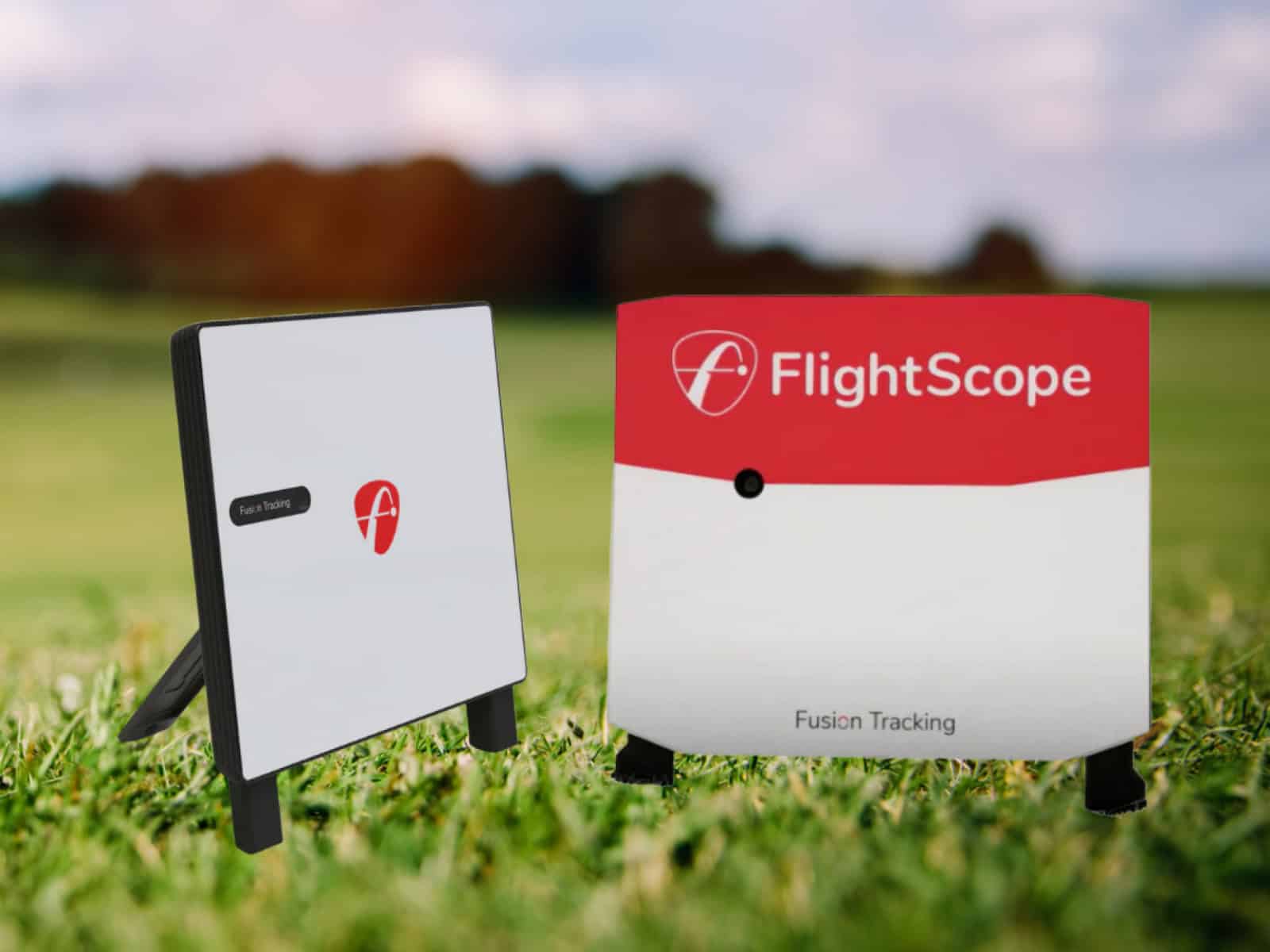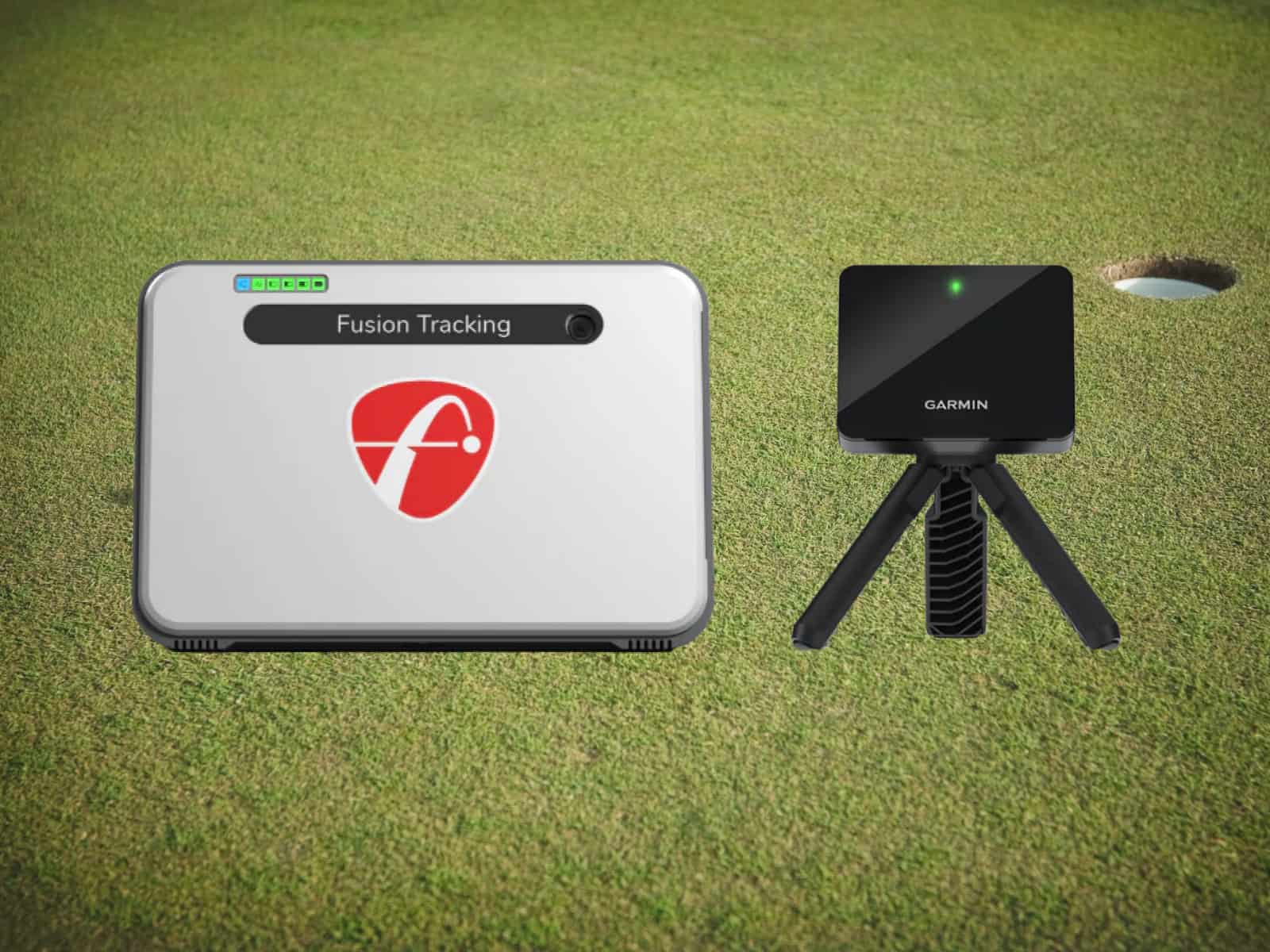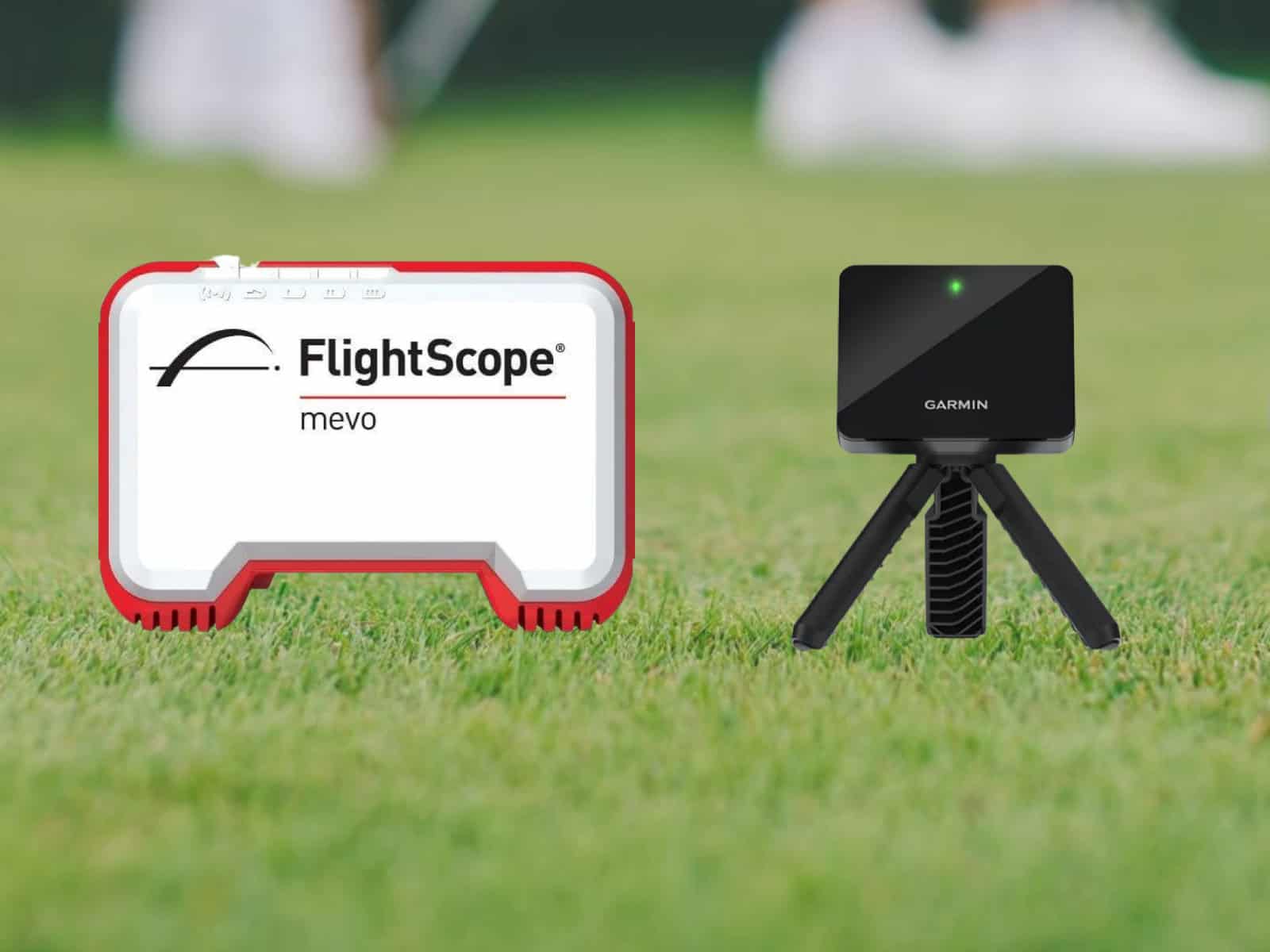The FlightScope X3 and X3C are premium devices that have transformed how players analyze their swings, optimize equipment and improve their games.
The X3, FlightScope’s flagship model, established itself with comprehensive tracking capabilities and robust features. The newer X3C promises similar performance in a more compact package.
This comparison cuts through marketing jargon to examine what truly separates these devices. We’ll analyze everything from technical specifications to real-world performance in different environments, helping you determine which FlightScope model aligns with your specific needs and budget.
FlightScope: Company Overview and Technology Foundation

FlightScope emerged as a pioneering force in sports tracking technology in 2000 when aerospace engineer Henri Johnson adapted military radar technology for sports applications. Initially developed for cricket, FlightScope’s expertise quickly expanded to golf, transforming how players analyze their performance with precise data.
Radar and Doppler Technology
At the core of FlightScope’s launch monitors lies sophisticated radar technology. Unlike photometric systems that rely on high-speed cameras, FlightScope utilizes 3D Doppler tracking radar—the same technology used in weather forecasting and military applications. This approach offers several distinct advantages:
- Ability to track the entire ball flight trajectory, not just the initial launch
- Accurate performance in various lighting conditions, including bright sunlight
- Comprehensive club data capture throughout the entire swing path
- Reliable readings through impact and beyond
From X2 to X3: The Evolution
FlightScope’s product evolution reflects their commitment to refining and advancing tracking technology:
- First Generation: Early models focused on basic tracking capabilities
- X2 Series: Introduced multi-dimensional tracking with expanded parameter sets
- X3 Family: Represents the pinnacle of FlightScope’s research and development
The X3 family builds upon previous generations with significant technical enhancements, including improved processors, more sensitive radar components and advanced algorithms for data filtering. This evolution has progressively improved accuracy while expanding the range of measurable parameters from basic ball flight metrics to comprehensive swing dynamics and impact conditions.
The technological progression from X2 to X3 models marked a substantial leap in both hardware capabilities and software sophistication, setting the foundation for the development of both the X3 and its compact counterpart, the X3C.
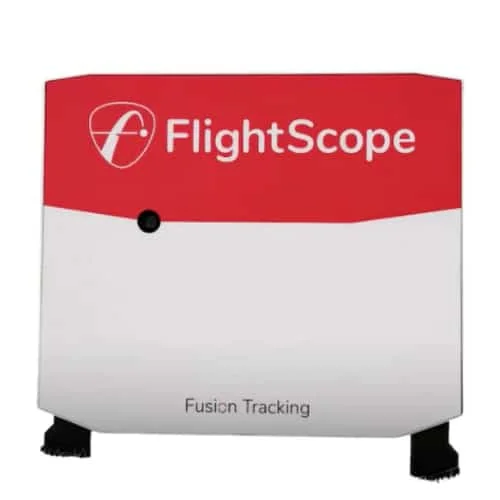
The FlightScope X3 is the company’s flagship launch monitor, released as the successor to the X2 series, and establishing new standards for precision and versatility in the premium launch monitor segment.
Technical Specifications
The X3 boasts impressive hardware specifications that underpin its performance capabilities:
- Dimensions: 9.8 × 7.1 × 4.7 inches (larger form factor)
- Weight: 9 pounds (4.08 kg)
- Battery Life: Up to 6 hours continuous operation
- Operating Range: 11-330 yards (optimal performance zone)
- Radar Frequency: 24GHz Doppler radar system
- Processor: Dedicated multi-core processor for real-time calculations
- Storage: Internal memory for session data with expandable options
- Connectivity: Wi-Fi, USB and Bluetooth capabilities
Core Features and Capabilities
The X3 delivers a comprehensive suite of features designed for serious golfers, teaching professionals and club fitters:
- Fusion Tracking: Combines 3D radar tracking with image processing
- Multi-Layered Practice Ranges: Virtual target options for practice sessions
- Environmental Optimizer: Adjusts calculations based on atmospheric conditions
- Video Synchronization: Automatically syncs swing video with data capture
- Auto Club Recognition: Identifies club type without manual input
- Customizable Data Dashboard: User-defined data display options
- Video Analysis Tools: Integrated swing analysis capabilities
Tracking Technology
The X3 employs dual tracking with radar and camera, creating what FlightScope terms their “Fusion Tracking” technology“:
Radar Tracking Components
The primary tracking system uses Doppler radar to monitor both club and ball throughout the entire flight path. The X3’s radar system captures data at a rate of 2,000+ measurements per second, tracking multiple data points simultaneously across three-dimensional space.
Multi-Dimensional Tracking
Unlike basic launch monitors that only capture data at impact, the X3 tracks:
- Pre-impact club path and position
- Impact dynamics
- Post-impact ball flight
- Full trajectory modeling
This comprehensive approach allows for a more accurate analysis of cause-and-effect relationships between swing mechanics and ball flight outcomes.
Data Parameters

The X3 captures an extensive array of data parameters, including the following:
Ball Data
- Ball speed
- Launch angle
- Launch direction
- Spin rate (total)
- Spin axis
- Carry distance
- Total distance
- Apex height
- Descent angle
- Landing angle
- Hang time
- Lateral landing
- Smash factor
Club Data
- Club head speed
- Club path
- Face angle
- Face to path
- Attack angle
- Low point
- Vertical swing plane
- Horizontal swing plane
- Dynamic loft
- Club acceleration profile
Software Interface and Compatibility
The X3 interfaces with FlightScope’s proprietary software ecosystem, and is compatible with third-party software like E6 Connect, THG2019, etc.:
- FlightScope Golf App: Primary mobile interface with real-time data visualization
- FlightScope VX App: Advanced visualization tools for teaching professionals
- FlightScope Skills App: Training protocol development for skill enhancement
- FlightScope TruGolf E6 Connect: Integration with simulator environments
- Data Explorer: Desktop analysis tool for deep-dive data assessment
Cross-platform compatibility extends to iOS, Android, Windows and macOS, allowing seamless integration across devices. Additionally, the X3 offers API access for third-party developers, enabling integration with custom coaching and fitting applications.
FlightScope X3C: The Compact Evolution
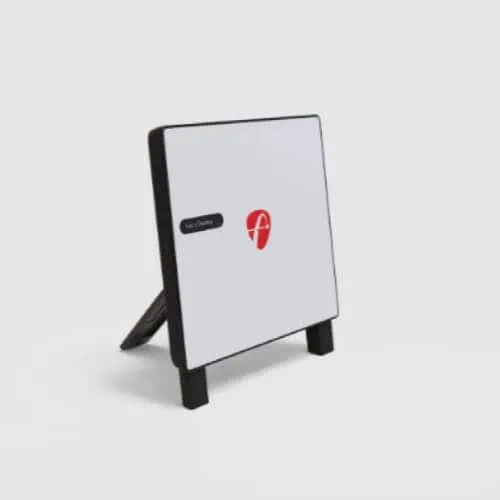
The FlightScope X3C represents a significant evolution in launch monitor design, maintaining the technological prowess of the X3 while introducing revolutionary changes to form factor and portability. Released as the newer addition to FlightScope’s premium lineup, the X3C brings aerospace-grade materials and thoughtful engineering to professionals who value mobility without performance compromise.
For golfers seeking a deeper dive into the real-world performance of this upgraded model, our Flightscope X3c review offers hands-on insights into its features, portability, and overall value to help you make an informed decision.
Design Philosophy and Innovation
The X3C’s development centered around solving a critical challenge in the premium launch monitor market: maintaining professional-grade tracking capabilities while significantly enhancing portability. FlightScope achieved this through aerospace innovation:
- World’s First Carbon Fiber Launch Monitor: Handcrafted using aerospace-grade carbon fiber materials
- Modern Aesthetic: Clean all-white design that stands apart from the X3’s red and white finish
- Structural Engineering: Maintains durability while dramatically reducing weight and bulk
- Functional Ergonomics: Redesigned for easier transport, setup and repositioning
Technical Specifications
The X3C introduces several hardware improvements while maintaining core technological capabilities:
- Weight: Under 7 lbs – Lighter than the X3
- Construction: Lightweight carbon fiber enclosure for superior durability and impact resistance
- Battery Life: Comparable to the X3 with up to 6 hours of continuous operation
- Setup Features: Auto-leveling feet and integrated hydraulic kickstand for quick deployment
- Connectivity: Same Wi-Fi, USB and Bluetooth options as the X3
Core Features and Capabilities
The X3C maintains all the premium features of the X3 without compromising functionality:
- Fusion Tracking Technology: The same 3D Doppler radar combined with high-speed image processing
- Environmental Optimizer: Simulates various playing conditions including altitude, temperature and wind
- Face Impact Location: Visual display of contact point on clubface with heat mapping
- Multicam Synchronization: Supports up to three cameras for multi-angle swing analysis
- Advanced Data Visualization: Complete suite of graphical representations for all measured parameters
The X3C preserves the comprehensive data tracking capabilities that made the X3 an industry leader:
- Complete Parameter Set: Maintains all 50+ data parameters for full swing, chipping and putting analysis
- Dual Environment Capability: Functions with equal effectiveness indoors and outdoors
- Simulation Compatibility: Works with the same range of simulation software, including E6 Connect
- No Annual Fees: Like the X3, avoids subscription-based models for software access
Portability Advantages

The X3C’s most significant departure from the X3 is its enhanced portability:
- Travel-Friendly Design: Dramatically lighter weight makes transport significantly easier
- Impact-Resistant Housing: Carbon fiber construction provides better protection during transit
- Quicker Setup: Self-leveling feet and hydraulic leg speed up deployment on any surface
- Carrying Case Optimization: Redesigned protective case accommodates the sleeker profile
Target User Profile
The X3C’s design choices reflect a clear understanding of specific user needs:
- Teaching Professionals: Particularly those who travel between facilities or provide on-course instruction
- Tour Players: Competitors who need reliable data during practice rounds at different venues
- Club Fitters: Mobile fitting specialists who bring their expertise to different locations
- Technical Coaches: Data-driven instructors who work with players across multiple facilities
- Serious Amateurs: Dedicated players who value portability for practice at various locations
While maintaining the same technological foundation as the X3, the X3C’s revolutionary carbon fiber construction and significantly reduced weight make it ideal for professionals who prioritize mobility without sacrificing data quality or feature completeness.
Direct Comparison: X3 vs X3C
While both the X3 and X3C utilize the same core technology and tracking capabilities, several significant differences set them apart.
Key Similarities
Both the FlightScope X3 and X3C share fundamental technology and capabilities that define their premium positioning:
- Tracking Technology: Both utilize 3D Doppler radar with Fusion Tracking (radar + image processing)
- Data Parameters: Identical capacity to track over 50 metrics including club path, face angle, ball speed, spin, and launch angle
- Environmental Adaptability: Both include built-in GPS, barometer, thermometer, and accelerometer sensors
- Software Compatibility: Work equally well with FS Golf, FS Skills, E6 Connect, and third-party simulation software
- Interface Requirements: Neither includes a built-in screen, requiring connected devices for data visualization
- Multisport Capability: Both support limited tracking for other sports like baseball and tennis
- Indoor & Outdoor Versatility: Equally suitable for both settings with comparable accuracy
- Feature Set: Identical Environmental Optimizer, Face Impact Location, and video analysis functionality
Key Differences
Despite their shared technological foundation, several significant distinctions separate these models:
- Construction: X3 uses standard composite/plastic housing, while the X3C features lightweight carbon fiber enclosure
- Weight: X3 weighs approximately 9 lbs versus the X3C at under 7 lbs
- Portability: X3C offers significantly enhanced mobility and travel-friendliness
- Aesthetics: X3 features a red and white finish, while the X3C adopts an all-white modern look
- Durability: X3C’s carbon fiber construction provides superior impact resistance
- Target Users: While both serve professionals, the X3C specifically targets mobile coaches and on-the-go players
- Price: X3C typically retails at $14,995, while the older X3 can be found for under $11,000
- Release Timeline: X3C represents the newer iteration with updated design philosophy
Limitations of Each Model
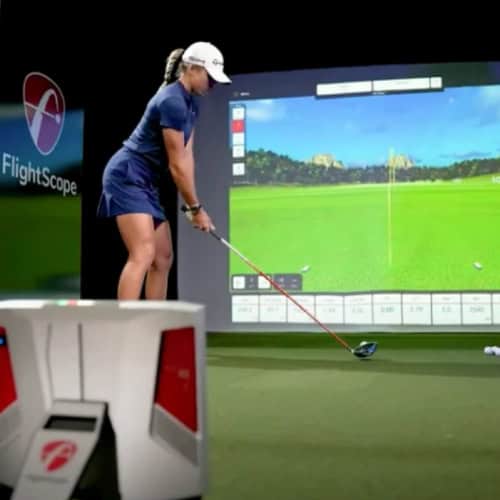
Each model presents specific considerations that might influence buying decisions:
X3 Limitations
- Weight: Less suitable for professionals who travel frequently
- Bulkiness: Requires more substantial storage space
- Material Durability: Standard composite materials may be more susceptible to impact damage
X3C Limitations
- Market Position: As the newer model, it may have fewer user reviews and long-term reliability data
- Premium Price: Despite advantages, it still represents a significant investment
- Identical Technology: Users solely interested in data capabilities gain no technological advantage
Performance Analysis: Indoor Use
Indoor environments present unique considerations for launch monitor performance. Both the FlightScope X3 and X3C are designed to function in controlled settings, but setup requirements and operational factors warrant careful examination.
Indoor Space Requirements
Effective indoor operation depends on having adequate space for proper device placement and ball flight. Both units require approximately 16-20 feet in room length for optimal radar performance, with minimum 9-10 foot ceilings recommended for standard shots.
Ball Tracking Considerations
Indoor tracking presents specific challenges that both models address similarly. Small metallic stickers are required on golf balls for accurate spin measurements indoors with either device. Limited flight distance indoors means both units rely more heavily on initial launch data, though they provide reliable club data even in severely restricted spaces.
Simulation Capabilities
The virtual golf experience is a primary use case for indoor deployment. Both units include access to 12 virtual golf courses via the E6 Connect platform and work equally well with GSPro, The Golf Club 2019 and other simulator software. The rendering quality and real-time feedback are virtually identical between models, with the same access to additional course packages.
Accuracy in Controlled Environments
Indoor settings offer controlled conditions that benefit measurement precision. Both units maintain exceptional accuracy for club measurements indoors and achieve comparable spin measurement precision when using metallic stickers. Launch angle and direction measurements are highly accurate with both devices, and the Environmental Optimizer allows adjustments for indoor conditions.
Software Integration for Indoor Use
The software experience remains consistent across both models. The FS Golf App provides an identical interface regardless of which model you use, with the same customizable dashboard configurations for indoor-specific metrics. Video integration supports multicam functionality for swing analysis with equal capability, and both devices offer identical session management features for saving and reviewing indoor practice data.
Performance Analysis: Outdoor Use
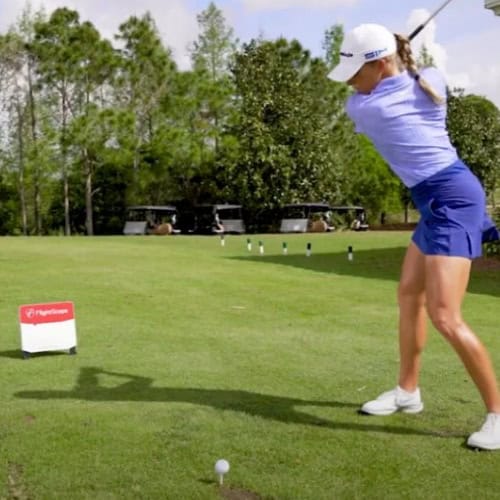
Outdoor environments represent the natural habitat for both the FlightScope X3 and X3C launch monitors, where their radar technology can fully capture complete ball flight.
Field and Range Performance
Both the X3 and X3C excel in open-air environments where they can track the full ball trajectory. Their Doppler radar technology operates at peak efficiency when unrestricted, capturing data from pre-swing through impact and the entire ball flight path. In outdoor settings, both models demonstrate identical tracking ranges, effectively monitoring shots from 11 yards to over 330 yards with exceptional accuracy.
Weather Resistance and Durability
The X3C holds a slight advantage in adverse weather conditions due to its carbon fiber construction. This aerospace-grade material provides enhanced moisture resistance and durability compared to the X3’s standard composite housing. While both units are designed for outdoor use, the X3C’s more robust construction offers additional protection against accidental impacts during transportation or setup.
Environmental Adaptation
Both models feature identical environmental sensors—GPS, barometer, thermometer, and accelerometer—that automatically adjust calculations based on current conditions. The Environmental Optimizer function works identically across both units, allowing you to account for factors like altitude, temperature, humidity, and wind when analyzing performance data.
Battery Performance in Field Conditions
Despite their physical differences, both models offer comparable battery life of up to 6 hours. Temperature extremes can affect battery performance similarly in both units, with cold weather reducing operational time. Neither model demonstrates a significant advantage in power management during extended outdoor sessions, making backup power sources equally advisable for marathon practice sessions with either device.
What if I Already Own the Original X3?
If you already own the original FlightScope X3, upgrading to the X3C isn’t necessary for performance—both deliver the same tracking technology, data accuracy and software features.
The only real difference is portability: the X3C is lighter and includes improved setup features. This makes it ideal for coaches, traveling pros or users who move the unit often.
Thanks to FlightScope’s trade-in program (helping save money on good condition units), upgrading may be more affordable—but unless portability is critical to your workflow, your current X3 remains a top-tier tool. The trade-in program was introduced for Flightscope’s Mevo launch monitor; currently, trade-in for the X3C is available for the United Kingdom, but we expect it to be available in the US very soon.
Frequently Asked Questions
Let’s now answer some common questions regarding the two units to ensure you get the big picture and choose the best unit for your needs.
Is the X3C just a smaller version of the X3?
No, the X3C is not merely a miniaturized version of the X3. While both devices share identical core technology and tracking capabilities, the X3C represents a significant engineering advancement with its aerospace-grade carbon fiber construction.
Which model provides better accuracy for driver data?
Both the X3 and X3C deliver identical accuracy for driver data. They share the same Fusion Tracking technology that combines 3D Doppler radar with high-speed image processing. Testing confirms that club head speed, ball speed, launch angle, spin rate, and other critical driver parameters demonstrate equivalent precision across both models.
Can both models be used for club fitting?
Yes, both the X3 and X3C are equally capable and highly effective for professional club fitting. Each model captures the same comprehensive set of over 50 data parameters essential for proper club fitting, including attack angle, club path, face angle, smash factor, and impact location.
What are the subscription requirements for each model?
Neither the X3 nor X3C requires annual subscriptions or recurring fees. Both FlightScope models provide complete functionality without additional payments after purchase. The included E6 Connect software package with 12 golf courses comes standard without subscription requirements.
Are there any exclusive features in either model?
There are no exclusive software features or tracking capabilities unique to either model. Both utilize identical tracking technology, measure the same parameters and work with the same software ecosystem.
Can I upgrade from X3 to X3C or vice versa?
FlightScope offers a trade-in program that allows X3 owners to upgrade to the X3C with a credit of up to £4,000/$4,000+, depending on the condition of their current unit. This significantly reduces the financial impact of upgrading. However, there is no “upgrade path” in terms of software or hardware modifications to convert one model to another.
As mentioned earlier, the program is currently available in the UK, but it is expected to be available in the US, too.
Final Thoughts
The FlightScope X3 and X3C share identical tracking technology, data capabilities and software compatibility. Neither requires subscription fees, both offering the same 50+ parameters and E6 Connect package with 12 golf courses.
For a comprehensive assessment of the FlightScope X3’s capabilities, read our in-depth FlightScope X3 launch monitor review to discover how it delivers exceptional performance and value.
The fundamental difference lies in physical design. The X3C’s carbon fiber construction reduces weight significantly and features an improved kickstand for enhanced portability.
The X3 remains ideal for fixed indoor installations where portability isn’t critical. The X3C excels for mobile instructors, traveling players and those who value lightweight design.
For new buyers, the X3C’s advanced materials and enhanced portability generally make it the superior choice, given the minimal price difference. Current X3 owners should only consider upgrading if portability significantly impacts their workflow.
Thanks for reading!


